The best Micro Four Thirds lenses for Olympus / OM System and Panasonic cameras
I round up the best Micro Four Thirds lenses, from ultra-wide angle to super-telephoto and everything in between.
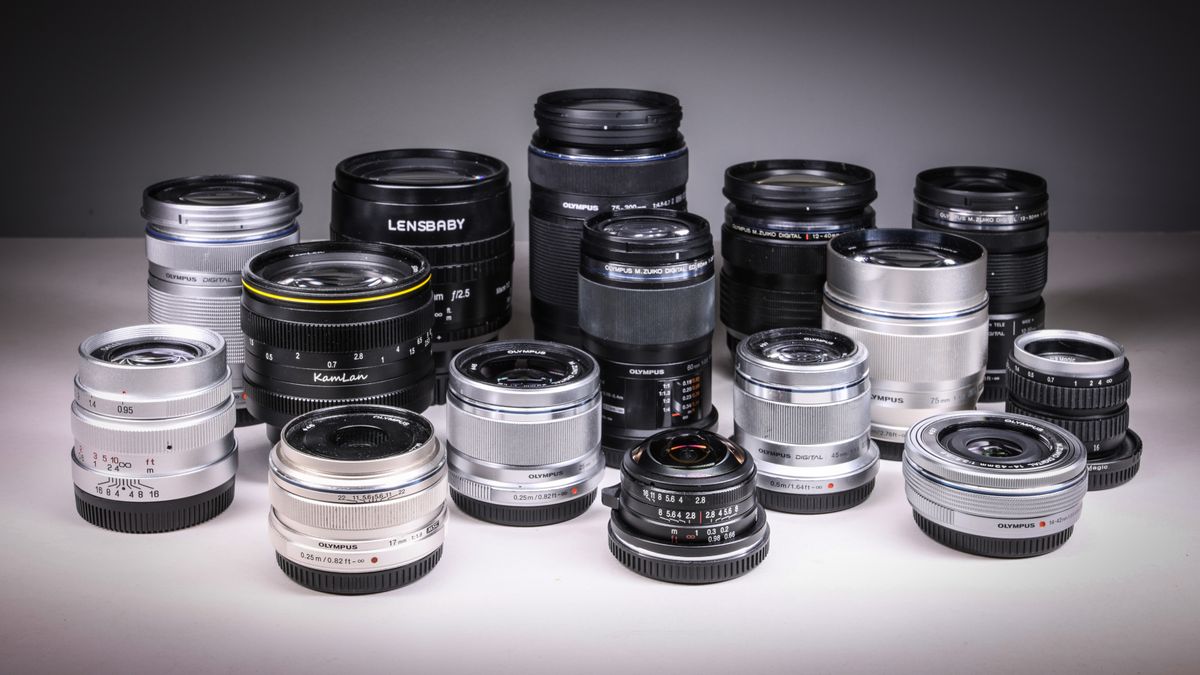
- The Quick List
- Panasonic lenses
- Best standard zoom
- Best for portraits
- Best telephoto zoom
- Best super-telephoto zoom
- Olympus / OM System
- Best wide-angle zoom
- Best everyday prime
- Best macro prime
- Best OM portrait prime
- Best OM telephoto zoom
- Best OM super-telephoto zoom
- Comparisons
- How to choose the best MFT lenses
- How we test lenses
- FAQs
I love the Micro Four Thirds system and firmly believe that one of its biggest advantages is its versatility. Whether you shoot with an Olympus / OM System camera, a Panasonic camera, a Blackmagic Pocket Cinema Camera or any of the other bodies that employ this open-source mount, all the lenses can be used interchangeably – which means you have a huge number to choose from.
I'm an avowed enthusiast of the system, having used Olympus and OM System gear in my professional work for several years now. To make this guide easy to digest I've divided it into two main sections: Panasonic lenses and Olympus / OM system lenses. Different brands excel in different areas, so it's a good idea to decide what you want the lens for and see which would suit you best.

The editor of Digital Camera World, James has 21 years of experience as a journalist and started working in the photographic industry in 2014. James is a committed Olympus / OM System enthusiast, making him the ideal choice to compile this guide. In addition to putting together the full list, he has nominated a few MFT lenses that are his personal favorites (no prizes for guessing which manufacturer they're from).
The Quick List
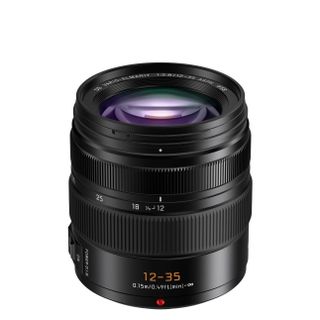
A pin-sharp and robust pro zoom that works brilliantly on Panasonic bodies, this lens weighs just 305g. An outstanding choice for everyday shooting.
Read more below
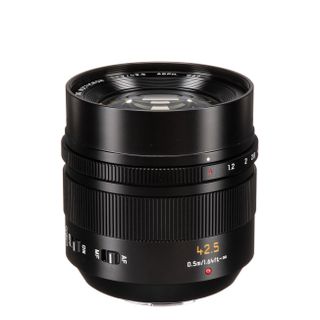
Delivering an equivalent focal length of 85mm, this large-aperture prime is perfectly pitched for shooting portraits, with sublime Leica-made optics.
Read more below
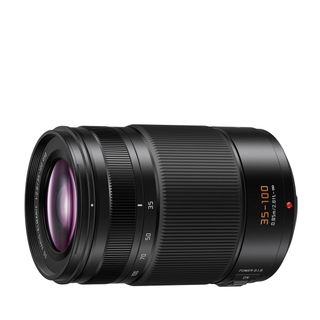
Panasonic's answer to the classic 70-200mm f/2.8 'trinity' telephoto zoom for the Micro Four Thirds format.
Read more below
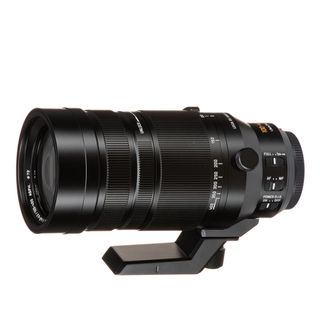
Ideal for action, sports and wildlife photography, this lens has a mighty effective telephoto reach of 200-800mm in full-frame terms.
Read more below
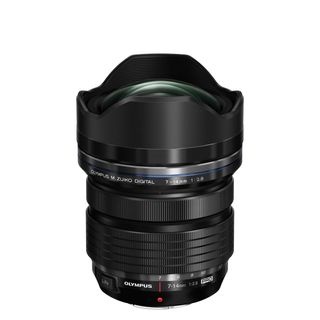
One of the widest zooms it's possible to get for MFT, this Olympus-made lens is superb for landscapes and architecture, with a constant f/2.8 aperture.
Read more below
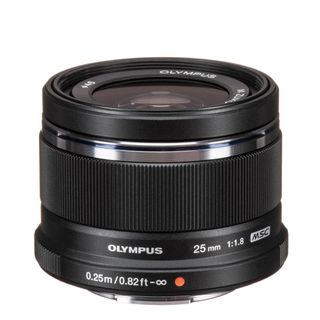
That's right – once you remember the crop factor, this is a good old nifty fifty, delivering a naturalistic focal length that's well-suited to day-to-day photography.
Read more below
Load the next products...
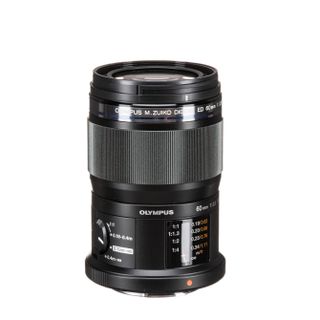
A powerful macro lens that's ideal for extreme close-ups. The MFT crop factor bumps up the 'effective' maximum magnification from 1.0x to 2.0x.
Read more below
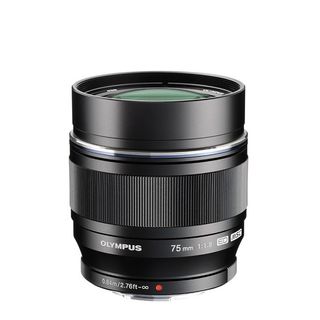
One of my all-time favorite lenses for portraiture with the Micro Four Thirds system, it delivers sublime image quality.
Read more below
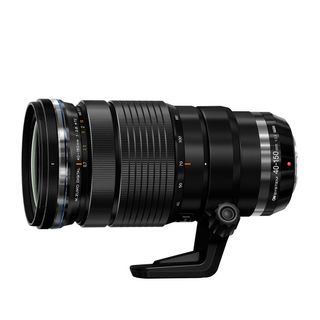
This pro-spec lens delivers an 'effective' telephoto range of 80-300mm in full-frame terms, with a fast and constant f/2.8 aperture rating.
Read more below
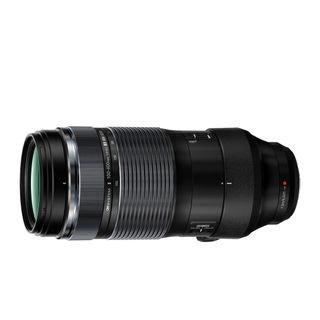
With a mighty 200-800mm equivalent zoom range, this super-telephoto lens really covers the distance. It's ideal for sports, wildlife and bird photography.
Read more below
Best Micro Four Thirds lenses
Why you can trust Digital Camera World
Best Micro Four Thirds lenses: Panasonic
Up first, here are my picks of the best Panasonic-made lenses for Micro Four Thirds. These tend to work much better with Lumix G cameras, so bear that in mind.
Best standard zoom
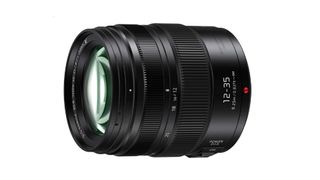
1. Panasonic Lumix G X Vario 12-35mm f/2.8 II Asph Power OIS
Specifications
Reasons to buy
Reasons to avoid
The Panasonic Lumix G X Vario 12-35mm f/2.8 II Asph Power OIS is a standard zoom that gives the same kind of performance and versatility as a pro-grade 24-70mm f/2.8 lens on a full-frame camera body – but, typically for an MFT lens, it comes in a much more compact, lightweight package. Indeed, at 305g, it’s only about a third of the weight of a comparable full-frame optic.
Even so, the lens is no lightweight in terms of build quality, with a robust and weather-sealed construction. Center sharpness is excellent throughout the zoom range, even when shooting wide open at f/2.8, and corner sharpness also becomes impressive at f/4 and narrower apertures. It’s Panasonic's best Micro Four Thirds lens for everyday shooting, with the bonus of effective optical stabilization.
Best for portraits
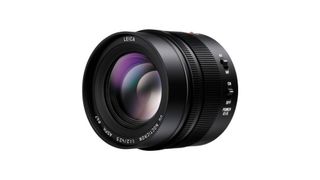
Specifications
Reasons to buy
Reasons to avoid
The Leica Nocticron legend is reborn for the MFT format, in this metal-bodied beauty of a lens. It has a well-damped, smooth-action focus ring and useful aperture ring, both of which boost the overall handling characteristics. The 2x crop factor gives the lens an effective focal length of 85mm, which is perfect for portrait photography. The flip side is that, because depth of field is linked more closely to ‘actual’ rather than ‘effective’ focal length, the MFT system struggles to give a really tight depth of field, compared with full-frame and even APS-C systems.
This lens fights back with a super-fast f/1.2 aperture, which helps to reduce the depth of field and give soft, creamy background blur in portraiture, as well as enabling fast shutter speeds even under dull lighting. And when you want to use narrower apertures, there’s also optical stabilization – which is almost unheard of in f/1.2 lenses. Image quality is absolutely sumptuous, and this is one of the best optics for portraiture on MFT cameras – though it’s seriously expensive (but, then again, the Canon RF 85mm f/1.2 portrait lens is well over twice the price!).
Read our full Panasonic Leica DG Nocticron 42.5mm f1.2 Asph Power OIS review
Best telephoto zoom
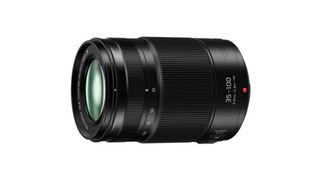
Specifications
Reasons to buy
Reasons to avoid
This lens is perfect for use alongside our first choice Panasonic lens, the 12-35mm f/2.8, as it's equivalent to a 70-200mm trinity lens if you were shooting on a full-frame camera. It's a versatile optic that's great for portraits, landscapes or even wildlife photography. Better still, its robust weather-sealing makes it ideal for use on outdoor adventures – and it weighs about a third of a full-frame equivalent, so even if you're hiking long distances it shouldn't slow you down.
To get super-sharp images from corner to corner you'll have to stop it down to f/4, but overall it's a brilliant lens offering high-quality images with minimal lens flare, aberration or color casts.
Read our full Panasonic Lumix G X Vario 35-100mm f2.8 II Power OIS review
Best super-telephoto zoom
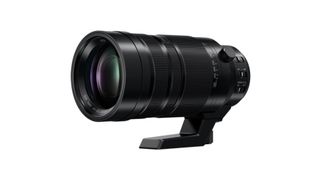
Specifications
Reasons to buy
Reasons to avoid
A zoom range of 100-400mm would give a powerful telephoto reach on a full-frame camera but, thanks to the magic of MFT, you get a whopping maximum equivalent focal length of 800mm. As we’ve come to expect from Panasonic’s upmarket lenses, the 100-400mm is sturdy, robust and meticulously engineered. Highlights include a locking mechanism for the zoom ring and an autofocus range limiter switch. The effective optical image stabilizer is very worthwhile, given the enormous effective focal lengths on tap.
Even though the lens weighs nearly a kilogram, it’s still sufficiently lightweight for prolonged periods of handheld shooting. For added comfort and stability it comes complete with a mounting foot, for well-balanced use on a tripod or monopod. Image quality is superb, with excellent sharpness right up to the maximum 400mm zoom setting. The f/6.3 aperture rating at the long end of the zoom range is relatively slow but quite typical for this class of super-telephoto lens.
Best Micro Four Thirds lenses: Olympus / OM System
In this section, I've picked out the Olympus and OM System lenses that have most impressed me and our review team over the years.
Best wide-angle zoom
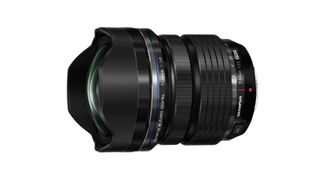
Specifications
Reasons to buy
Reasons to avoid
While the crop factor of MFT format cameras boosts the telephoto abilities of lenses, it makes the design of ultra-wide optics more of a challenge. Which makes the M.Zuiko 7‑14mm quite remarkable, with a minimum focal length of just 7mm, delivering an astonishing 114° viewing angle – similar to using a 14mm lens on full-frame cameras.
Like other lenses in the M.Zuiko Pro line-up, it’s immaculately designed and boasts fabulous build quality. Contrast and sharpness are outstanding, while color fringing and distortions are negligible. As with many ultra-wide lenses, however, the hood is built-in – so there’s no filter attachment thread.
Read our full Olympus M.Zuiko 7-14mm f/2.8 Pro review
Best everyday prime
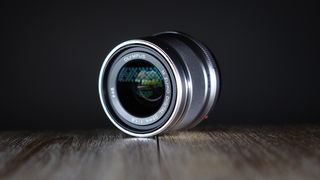
Specifications
Reasons to buy
Reasons to avoid
Measuring a mere 58x42mm and tipping the scales at just 137g, this diminutive lens feels right at home on even the most compact body. Naturally, the 2x crop factor of MFT cameras gives this lens an effective 50mm focal length, delivering a classic ‘standard’ viewing angle with a fairly fast f/1.8 aperture rating – and this nifty fifty is one that I leave pretty much glued to one of my cameras at all times.
Image quality is impressive in all respects, with exceptional sharpness and virtually no aberrations. On top of that you have snappy autofocus, and that fast f/1.8 aperture enables you to shoot in even tricky lighting conditions. Everyone who owns a camera should have a 50mm – and this is one of the very best out there.
Read our full Olympus M.Zuiko 25mm f/1.8 review
Best macro prime
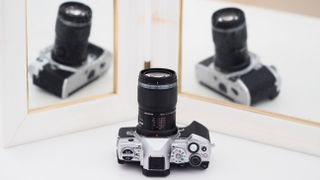
Specifications
Reasons to buy
Reasons to avoid
Macro is a genre where Micro Four Thirds truly excels, with its 2x crop factor doubling the magnification and its deeper depth of field (traditionally considered a weakness of the format) enabling you to keep more of your subject in focus. With those advantages already in your favor, the M.Zuiko 60mm Macro makes the art of the close-up even better.
Everyone who uses this lens has to learn the "rhythm" of the slightly slow autofocus – though the focus limiter switch and the fact you'll be doing a lot of manual focusing certainly make up for this. Once you're got your head around it, though, the 60mm Macro's 2:1 reproduction ratio gives you double life-size shots that will blow you away.
Image quality is absolutely phenomenal, with real bite in the detail, and the lens is weather sealed – so it's great for shooting out in nature. Its equivalent 120mm focal length also makes it a capable portrait lens, though it renders so much detail that your subjects may not thank you for showing all the blemishes on their faces!
Read our full Olympus M.Zuiko 60mm f/2.8 Macro review
Best OM portrait prime
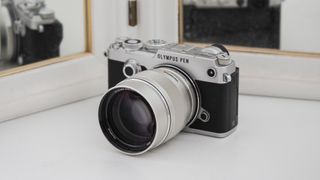
Specifications
Reasons to buy
Reasons to avoid
This lens has garnered a reputation as being one of the absolute best lenses for Micro Four Thirds – and with good reason! The M.Zuiko 75mm f/1.8 is a stunning prime lens with an equivalent 150mm focal length that is absolutely perfect for portraits. And it really provides a premium handling experience, thanks to its all-metal construction and smooth focusing ring.
Sharpness is absolutely outstanding from corner to corner, delivering surgical precision in your shots. The manufacturer employed some of its best coatings in the construction of this lens, ensuring smooth images free from reflection and stray light, while that f/1.8 maximum aperture gives tremendous leeway in low light – and of course, it helps obliterate the background in your portraits. This is one lens I will never, ever sell. If you want the full-frame depth of field look on an MFT camera, look no further.
Read our full Olympus M.Zuiko 75mm f/1.8 review
Best OM telephoto zoom

Specifications
Reasons to buy
Reasons to avoid
For professional assignments, this lens should be a kitbag essential for any serious Micro Four Thirds user. It's essentially the MFT version of a 70-200mm f/2.8 trinity zoom, only it provides an equivalent focal range of 80-300mm, and also is about half the size and weight of a full-frame 70-200mm f/2.8 equivalent. Its sophisticated optical construction and ZERO (Zuiko Extra-low Reflection Optical) anti-glare coating ensures sharp images full of contrast.
It's no exaggeration to say that this lens has earned me plenty of money over the years – as I detailed in my full review, I've brought it on many professional assignments and it has always delivered. It's fully weather-sealed to IP53 standards, and when it works with OM System's preternatural stabilisation system, it's absolute magic in the hands.
Read more: Olympus M.Zuiko 40-150mm f/2.8 Pro review
Best OM super-telephoto zoom
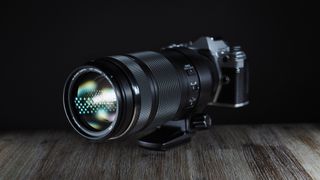
Specifications
Reasons to buy
Reasons to avoid
The M.Zuiko 100-400mm f/5.0-6.3 IS perfectly illustrates some of the key advantages of the Micro Four Thirds format – namely a compact and lightweight design that offers an incredible amount of reach for its size. With a focal length equivalent to 800mm at the long end, the M.Zuiko 100-400mm is also compatible with the Olympus M.Zuiko Digital 2x Teleconverter MC-20 and 1.4x Teleconverter MC-14 – which means that you can extend the maximum focal length to an enormous 1600mm if you want or need to!
The downside is it's not at its sharpest when shooting at its maximum focal length, though you can't expect an f/6.3 lens to achieve the same results as faster and more expensive optics. Curiously, too, it doesn't feature OM's fantastic Sync IS technology (which works in tandem with the camera's in-body stabilization to deliver up to 6.5 stops of correction), instead offering 3 stops of lens-only compensation. If you're prepared to make a few sacrifices, though, this is a decent lens if you're looking for a portable lens that'll hit 800mm.
Read our full Olympus M.Zuiko 100-400mm f/5.0-6.3 IS review
Lab data and comparisons
The graphs below show the comparative performance of the lenses in this guide, based on our in-house lab tests. Averaged scores for sharpness are quite similar throughout the entire group, so results for these Micro Four Thirds lenses are nothing if not consistent. Automatic corrections for color fringing and distortions help to deliver excellent results in practical terms.
Scores for sharpness and color fringing are averaged from data taken across the entire image frame, from the center to the edges and corners, throughout the aperture range. For zoom lenses, the scores are also averaged from data measured at all marked focal lengths, and the same applies to distortion. Bear in mind that these average values don't fully reflect specific areas of performance. For example, a zoom lens might have noticeable barrel and pincushion distortion at its shortest and longest focal lengths respectively, which tends to average out when looking at the data overall. For more detailed graphs of each lens's performance, which give the full picture, check out the graphs in our full standalone lens reviews.
How to choose the best MFT lenses
The best Micro Four Thirds lenses are small, lightweight and incredibly compact compared to full-frame and APS-C glass. Even the biggest super-telephoto lenses are small enough to keep in a rucksack without breaking your back. Whether you're after a budget lens or a pro optic that'll give you the highest quality images, there are loads to choose from. As we have discussed, Micro Four Thirds lens are completely interchangeable, with a standard mount and sensor size across all cameras in the system.
A key thing to remember is that Micro Four Thirds sensors possess a 2x crop factor, which means that you need to double the focal length on all these lenses to get their effective 35mm / full frame focal length. So, for example, a 25mm lens becomes a 50mm equivalent – making it a standard rather than a wide-angle. Once you get your head around this, some of the stranger-sounding lens configurations in MFT start to make more sense, e.g. the 42.5mm lens is effectively an 85mm lens, which is the most popular focal length for portrait.
How we test lenses
We test lenses using both real world sample images and lab tests. Our lab tests are carried out scientifically in controlled conditions using the Imatest testing suite, which consists of custom charts and analysis software that measures resolution in line widths/picture height, a measurement widely used in lens and camera testing. We find the combination of lab and real-word testing works best, as each reveals different qualities and characteristics.
FAQs
What are the disadvantages of Micro Four Thirds?
While MFT has many brilliant advantages, as we've seen throughout this guide, there are a few downsides and trade-offs to using the system. Mostly they revolve around the smaller physical sensor size, which impacts low-light performance. It also makes it harder to field wide-angle lenses, as the 2x crop factor significantly narrows any lens' field of view.
What is the difference between Four Thirds and Micro Four Thirds?
You may have heard both of these terms bandied about – they are technically two separate formats, though Four Thirds cameras are not produced anymore. The Four Thirds format came first, and was originally developed by Olympus and Kodak for DSLRs. When Panasonic and Olympus established Micro Four Thirds, they produced a new standard lens mount, but kept the old sensor size – which is why Micro Four Thirds cameras use Four Thirds sensors.
Get the Digital Camera World Newsletter
The best camera deals, reviews, product advice, and unmissable photography news, direct to your inbox!

James has 22 years experience as a journalist, serving as editor of Digital Camera World for 6 of them. He started working in the photography industry in 2014, product testing and shooting ad campaigns for Olympus, as well as clients like Aston Martin Racing, Elinchrom and L'Oréal. An Olympus / OM System, Canon and Hasselblad shooter, he has a wealth of knowledge on cameras of all makes – and he loves instant cameras, too.